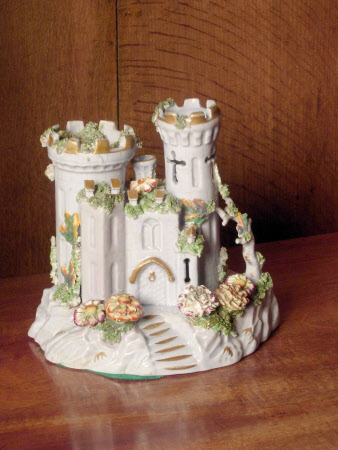Model castle
Category
Ceramics
Date
Unknown
Materials
Ceramic
Measurements
160 mm (Height); 170 mm (Diameter)
Order this imageCollection
Croft Castle, Herefordshire
NT 537419
Summary
Pastille burner in the form of a castle, lavender coloured porcelain body, with multiple turrets and pierced windows, a recess at the back with a holder for the pastille, probably Staffordshire, ca 1825; the base encrusted with hand-formed flowers, shredded clay with green glaze giving the effect of grass or moss applied to the base and roof tops, gilt detail to crenelations.
Full description
Pastille burner in the form of a castle, lavender coloured porcelain body, with multiple turrets and pierced windows, a recess at the back with a holder for the pastille, probably Staffordshire, ca 1825; the base encrusted with hand-formed flowers, shredded clay with green glaze giving the effect of grass or moss applied to the base and roof tops, gilt detail to crenelations. Pastilles were made of powdered, compressed charcoal combined with strong fragrances. During the nineteenth century, it was thought that bad smells carried and spread diseases and that masking them would offer protection from illness. Pastille burners were usually made in styles that appealed to an idealised view of the countryside, such as cottages and romantic ruins. They were made in porcelain, bone china and earthenware, which was cheaper. The architectural forms would add to the effect of the smouldering pastille, as the smoke would rise through the turrets or chimneys.
